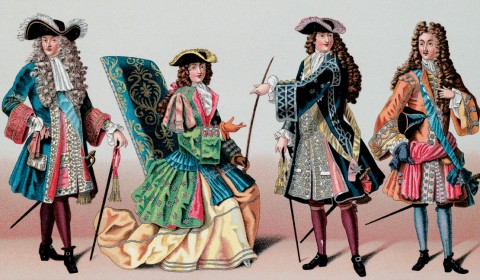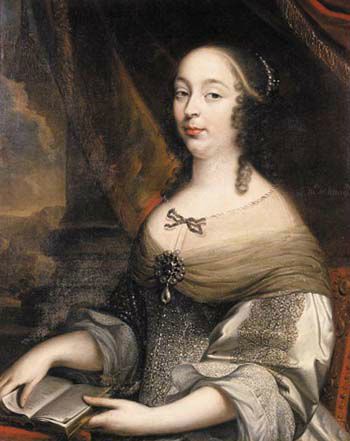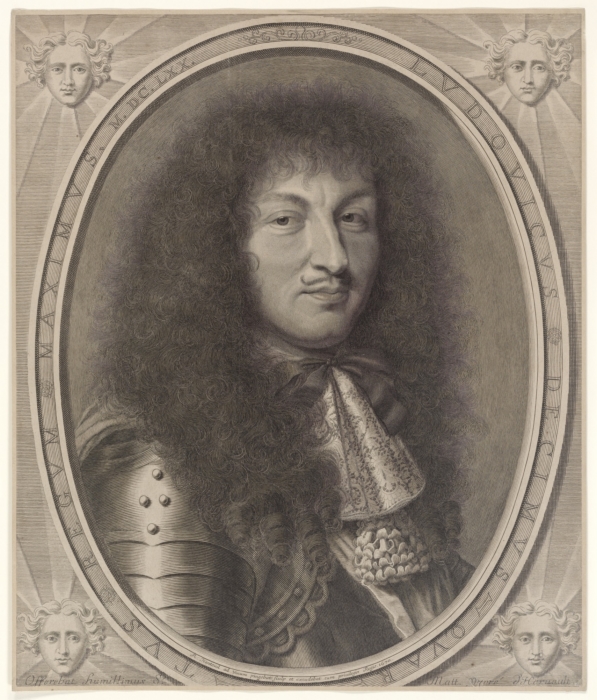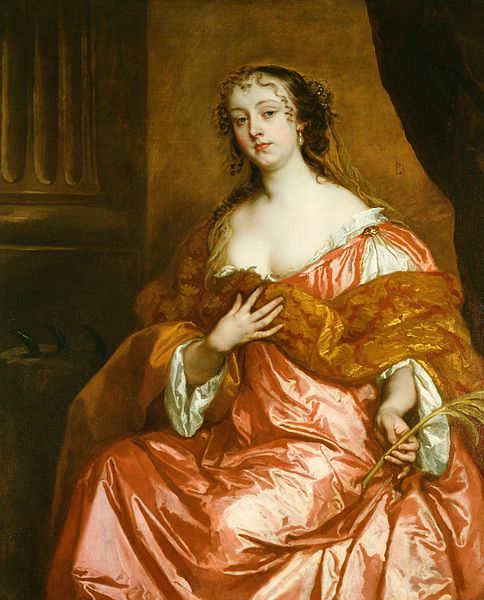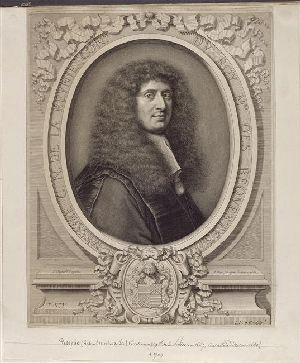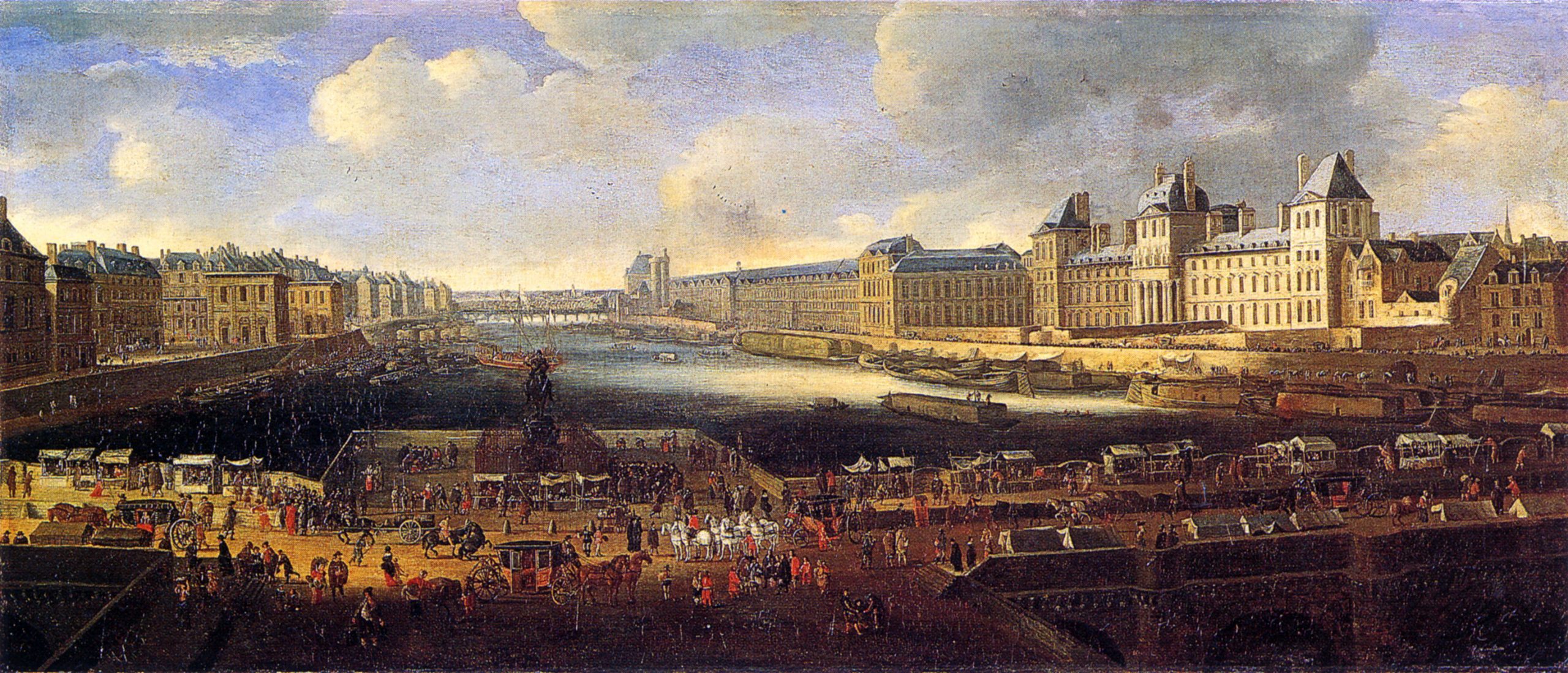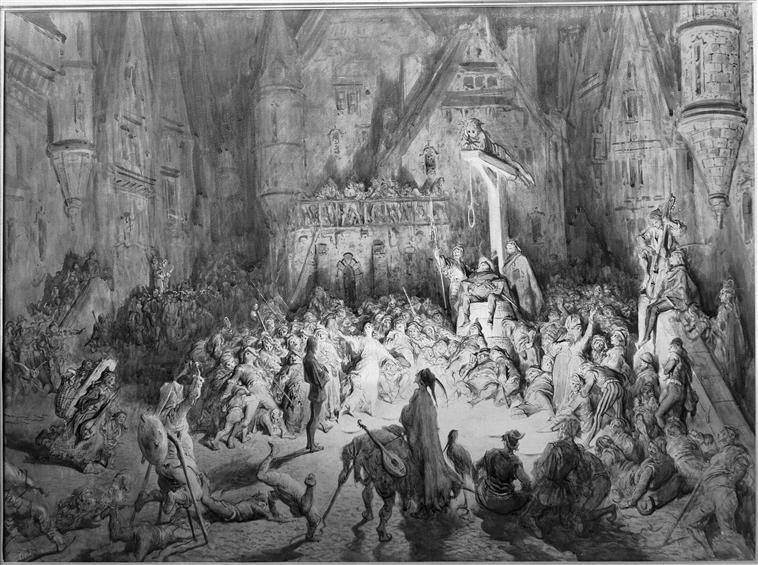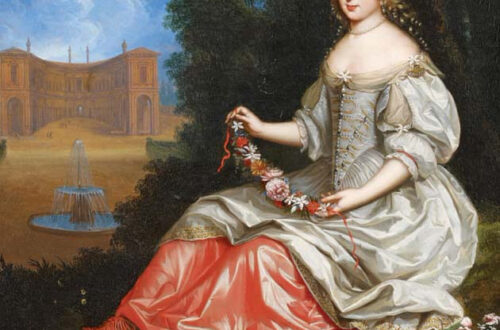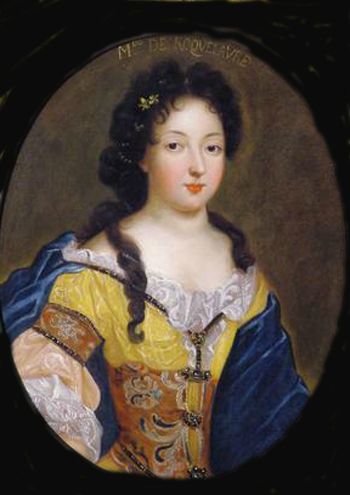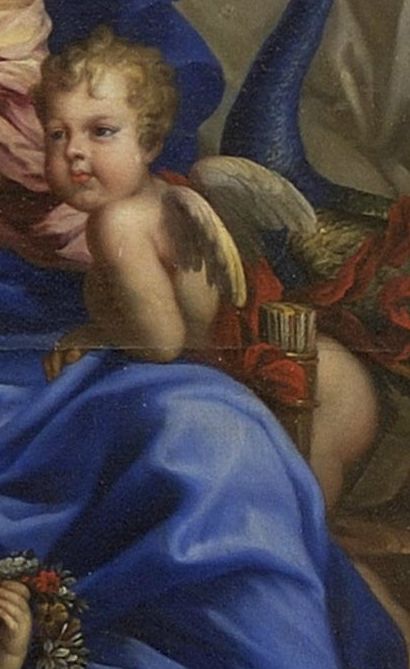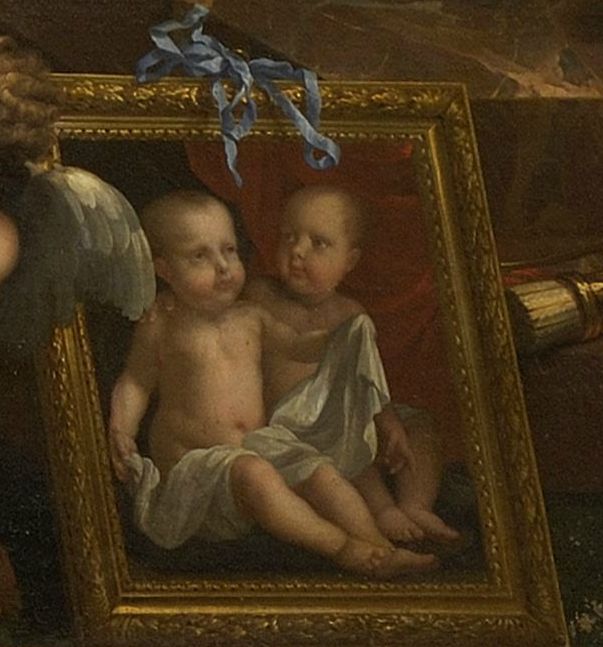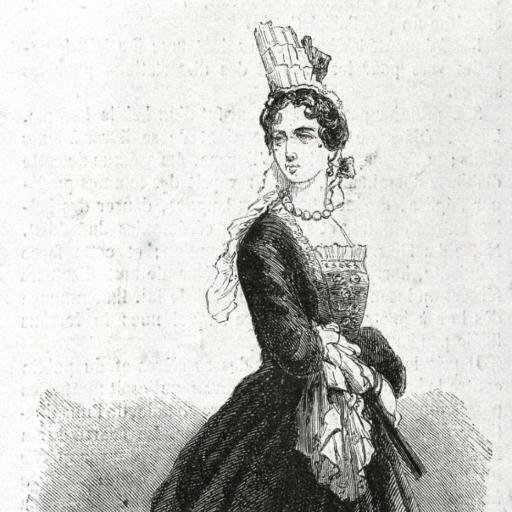-
Dangeau’s Diary, December 1686
10th. — The King has been very well today. He suffers very little and is very tranquil, but the intelligence he received this evening of the danger of Monsieur le Prince (le Grand Condé), has afflicted him very much. He conversed with Monsieur le Duc (Duc d’Enghien/Duc de Bourbon) a long time, who set off in all haste to attend…
-
Jeanne de Rouvroy de Chevrièvres, Comtesse de Saint-Vallier
Born in 1650, Jeanne was the daughter of Pierre de Rouvroy, Seigneur du Puy (Also called Marquis de Rouvroy, although he didn’t actually held that title.) and Marie Ursule de Gonteri. The name Rouvroy hints a connection to the Duc de Saint-Simon, but this Rouvroy was not part of the Rouvroy de Saint-Simon family. Jeanne, said to be very…
-
Louis-Auguste de Bourbon, Duc du Maine
Louis XIV’s favourite son was not his heir, the Dauphin, but one born in secrecy. It was the first son he had with his probably most famous mistress Madame de Montespan. Fearing the wrath of a horned hubby, la Montespan’s pregnancy was kept as secret as possible. It was the result of double-adultery and since there was the possibility…
-
Marie-Charlotte de Castelnau, Duchesse de Gramont
Marie-Charlotte was the last born child of Jacques de Castelnau-Mauvissiere, who became a Maréchal de France, and his wife Marie de Girard. In 1667, during a ball at court, Mare-Charlotte spotted the very dashing Antoine-Charles de Gramont and was at once taken with him. He was a very gallant young gentleman and rather handsome to behold, someone whose vices…
-
La Révolte de Roure
Vivarais, spring 1670. After a hard winter had destroyed all the olive trees of Languedoc, from Montpellier to Aubenas, rumours of new taxes sparked a revolt. The chronicler Dourille put it like this: “every day one talked of new taxes, real or not, that threatened to plunge the people of Vivarais into their final misery.” Taxes on various items, like hats,…
-
Elizabeth Hamilton, Comtesse de Gramont
Elizabeth Hamilton, one of Peter Lely’s Windsor Beauties, was born in 1640 in the Irish town Strabane. Her father Sir George Hamilton upheld the Royalist cause in Ireland as ally of the Stuarts and married Mary Butler, with whom he had nine children. Elizabeth being the third child and first daughter of the couple. To escape the political tension…
-
Marie-Rosalie de Brouilly de Piennes, Marquise de Châtillon
Born around 1665 to Antoine de Brouilly, Marquis de Piennes, and Françoise Godet, Marie-Rosalie was known as Mademoiselle de Brouilly before her marriage. Not too much is known about the time before her marriage, but it appears that Mademoiselle de Brouilly became a short-time mistress of Louis XIV in 1682. He was in his early forties, she probably around…
-
Gabriel-Nicolas de la Reynie, Lieutenant General of the Parisian Police
If you are a fan of Canal +’s Versailles, you are probably quite impressed by Fabien Marchal, Louis XIV’s ruthless head of security. Monsieur Marchal is an invention of Versailles’ writers, but like with many fictional characters, there is a historical one who served as inspiration. In case of Monsieur Marchal, it is Gabriel-Nicolas de la Reynie. Born in…
-
Les Honneurs du Louvre
To distinguish higher ranking nobles from lower ranking ones, there was something called Les Honneurs du Louvre at Louis XIV’s court. As the name hints, it had its origins in the Louvre and consisted of specific privileges that made it very clear to everyone else that the person who had Les Honneurs du Louvre was somewhat important to King and Kingdom. This set of…
-
Julie de Guenani, Marquise de Lassay
Julie, born between 1665 and 1668, was the natural daughter of Henri-Jules de Bourbon, at that time Duc d’Enghien, and Françoise-Charlotte de Montalais, Comtesse de Marans. She is known under various names: Julie de Bourbon, Julie de Gheneni, an anagram of Enghien, or in a slightly different spelling as Julie de Guenani. At court, as Mademoiselle de Châteaubriant. Her…
-
La Cour des Miracles
Although 17th century France had a Sun King, not everything was rainbows and sunshine. There places in various cities, were only the brave dared to walk and which the royal rays of Sun did not penetrate. For a 17th century noble, everything that was not in the immediate surroundings of Paris was often considered province. Thus is it no…
-
Anne-Lucie de la Mothe-Houdancourt, Marquise de La Vieuville
Born in 1647 to Antoine de La Mothe, Marquis d’Houdancourt, and Catherine de Beaujeu, Anne-Lucie lost her mother shortly after her birth. In care of her father, she grew up well-educated. Aged fifteen, Madame de Créquy called her a blonde beauty, sharp, bold, a bit cheeky and an expert in coquetry. At the beginning on 1662, as Louis XIV was…
-
Dangeau’s Diary, November 1686
7th. — In the evening there was an Italian opera performed, at which the King was present. I am informed that the servants of the Dutch ambassador have killed, in Paris, one of their fellows, who had become a catholic. The lieutenant criminal and Monsieur de La Reynie have written to the King to know how they were to act.…
-
Marie-Louise de Montmorency-Laval, Duchesse de Roquelaure
Born around 1657, Marie-Louise de Montmorency-Laval was a daughter of Guy Urbain de Laval, Marquis de Laval-Lezay, and his wife Françoise de Sesmaisons. She was granted a position as fille d’honneur to the Dauphine some-when before 1683 and had to give her position up the very year. A pregnant woman could not serve as fille d’honneur and Marie-Louise was in such a…
-
Philippe-Charles de France & Louis-François de France
After the births of Louis le Grand Dauphin, Anne-Élisabeth, Marie-Anne and Marie-Thérèse, Louis XIV and his wife Marie-Thérèse were blessed with two sons. Unfortunately, just like their sisters, both did not survive infancy. Philippe-Charles, born on August 5 in 1668 at Saint-Germain, received the title Duc d’Anjou upon his birth. Said title was until this point carried by his…
-
Anne-Élisabeth de France & Marie-Anne de France
After the Dauphin was born in 1661, Louis XIV and his wife Marie-Thérèse became the parents of two daughters. Both of them died in infancy. Anne-Élisabeth de France, named after her grandmothers Anne d’Autriche and Élisabeth de France, was born at the Louvre on November 18 in 1662. A bit over a month later, on December 30, the little…
-
The War of Devolution
Lasting from 24 May 1667 to 2 May 1668, the War of Devolution was Louis XIV’s war. His first chance to win glory on the battlefield and that he did. It all pretty much began with Louis’s wedding and the marriage contract. The Infanta Marie-Thérèse d’Autriche married the King of France in June 1660 to seal the Treaty of the Pyrenees, which ended…
-
François-Timoléon de Choisy
One of my favourite people of Louis le Grand’s court is the Abbé de Choisy. A 17th century transvestite who lived a rather adventurous life. Born in 1644 in Paris, he came from a not too wealthy family, which managed to enter the ranks of noblesse. Francois was the last born son of Jean III de Choisy, seigneur de…
-
Two years of partying like 1660…
It’s two years already. Doesn’t feel like it, does it? It kind of feels like we only just started… but as I write this, we have October 18 and that means it is exactly two years since the first article was published here. I still remember very well how nervous I was to hit that publish button. And how anxious I…
-
Marie-Anne de Bourbon, Princesse de Conti
Born on 2 October 1666 to Louis XIV and his mistress Louise de La Vallière, Marie-Anne was immediately taken out of the arms of her mother and trusted into those of Marie Charron, the wife of Finance Minister Jean-Baptiste Colbert. Like her birth, this transition happened in total secrecy. Marie-Anne was the fourth child of the couple, but all…

